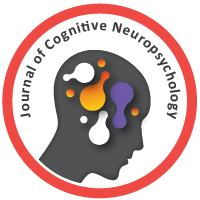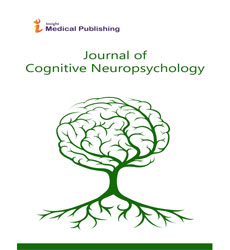Ostracism: Recent Neurological, Cognitive and Personality Research
Ono Academic College, Department of Business Administration, Israel
- Corresponding Author:
- Dr. Erez Yaakobi
Senior lecturer, Ono Academic College
Department of Business Administration, Israel
Tel: +(972)-50-9099567
E-mail: dr.yaakobi@ono.ac.il
Received date: September 05, 2017; Accepted date: September 06, 2017; Published date: September 13, 2017
Citation: Yaakobi E (2017) Ostracism: Recent Neurological, Cognitive and Personality Research. J Cogn Neuropsychol. Vol. 1 No. 1:1
Ostracism - being ignored, excluded and rejected by others - can occur in the family, workplace, school, religious groups, organizations and elsewhere [1-6]. Although it is commonplace to acknowledge that experiences of social rejection are painful, recent neurological studies suggest that the detection of ostracism activates the same region as physical pain [7-9]. In one neuroimaging study, scans were obtained of participants while being excluded in a virtual ball-tossing game. The scans showed that the anterior cingulate cortex (ACC), a region also responsive during physical pain, was more active during exclusion than during inclusion and was found to be directly associated with the level of self-reported distress [7].
Reports of shared circuitry underlying physical and social pain do not mean to suggest that these experiences are interchangeable. We know this from experience, since we can clearly differentiate between the pain of a stubbed toe and that of a social snub [8]. For example, while individuals can relive the pain of social rejection or betrayal, they are less capable of reliving the pain of physical assault or injury [10]. However, the similarities between felt and experienced pain deserve further attention to better understand the ways in which their neurological and neural substrates intersect [8].
Work on the neurobiology of rejection has hinted that those regions of the brain that govern the affective component of physical pain may underlie both experiences. It was found that strong negative emotional events that elicit feelings of rejection such as breakups tap brain areas that are related to physical pain, for instance when people are shown pictures of their ex-partners [9]. In an analysis of 500 MRI studies these same authors found that the secondary somatosensory cortex and dorsal posterior insula were responsive to both physical pain and rejection [9].
The immediate reactions to experimentally-induced manipulations of ostracism routinely show that people feel threats to four fundamental psychological needs: belonging, self-esteem, control, and meaningful existence [11,12]. Ostracism studies using the Cyberball computer manipulation have been tested in many countries, and suggest that these effects are generalizable across cultures [13]. Research has also shown that ostracism can lead to provocation and aggression [14-16], decreased prosocial behavior [17] obedience [18] and the feeling that life is meaningless [19]. In addition to these immediate effects on threatened needs, downstream behaviors also change. Nevertheless, it remains unclear why ostracism evokes such responses.
One possible explanation was formulated by Bauman [20] who argued that ostracism is "social death" [21-23]. In other words, the experience of ostracism evokes thoughts of death and these thoughts may lay the groundwork for ostracism effects. Support for this putative relationship between feelings of social death and reactions to ostracism come from findings reporting associations between death anxiety and troubling experiences in close relationships. Specifically, when participants were asked to think of problems in their romantic relationship, death thoughts were more readily accessible [24]. These authors also found that making mortality salient led to higher reports of romantic commitment and that the contextual salience of thoughts about romantic commitment reduced the effects of mortality salience. In another article these same authors found that death reminders heightened the motivation to form and maintain close relationships [25]. The maintenance of close relationships was suggested to provide a symbolic shield against the terror of death, whereas the breakup of close relationships resulted in an upsurge of death awareness.
Although studies have suggested that individual personality differences such as self-esteem and level of extraversion do not moderate the immediate effects of ostracism [5,23,24] this is not the case for attachment orientation [26,27]. This could be because attachment is thought to be a socially oriented survival-based system. It is claimed that humans have coped with survival-based problems by seeking the help of others [28]. Thus, ostracism may constitute a threat because it acts as an exclusion mechanism and is related to social separation anxiety. Attachment orientations may be linked to reactions to ostracism because the social connections formed in early childhood with the attachment figure affect later sensitivity to attention and inclusion by others. Yaakobi and Williams [26,27] for instance found that attachment anxiety and avoidance moderate the negative effects of ostracism and that recalling an attachment event that is consistent with one’s attachment internal working model moderates the negative effects of ostracism.
Because ostracism is so painful and affects so many people, clearly more studies should be conducted to achieve a greater understanding of its cognitive, behavioral and neuropsychological underpinnings, as well as to identify the coping mechanisms that can lessen its negative psychological consequences.
References
- Ferris DJ, Brown DJ, Berry JW, Lian H (2008) The development and validation of the workplace ostracism scale. J Appl Psychol 93: 1348-1366.
- Miceli MP, Near JP (1994) Relationships among value congruence, perceived victimization and retaliation against wristle-blowers. J Manag 20: 773-794.
- Nezlek JB, Wesselmann E, Wheeler L, Williams KD (2012) Ostracism in everyday life. Group Dyn 16: 91-94.
- Saylor CF, Nida SA, Williams Kipling D, Taylor LA, et al. (2012) Bullying and ostracism screening scales (BOSS): Development and applications. Child Health Care 41(4): 322-343
- Williams KD (2001) Ostracism: The power of silence. New York, NY: Guilford Press.
- Williams KD (2007a) Ostracism. Annu Rev Psychol 58:425-452.
- Eisenberger NI, Lieberman MD, Williams KD (2003) Does rejection hurt? An FMRI study of social rejection. Science 203: 290-292.
- Eisenberger NI (2012) Broken hearts and broken bones: A neural perspective on the similarities between social and physical pain. Curr Dir Psychol Sci 21: 42-47.
- Kross E, Berman MG, Mischel W, Smith EE, Wager TD (2011) Social rejection shares somatosensory representations with physical pain. Proc Natl Acad Sci U S A 108: 6270-6275.
- Chen Z, Williams KD, Fitness J, Newton N (2008) When hurt will not heal: Exploring the capacity to relive social and physical pain. Psychol Sci 19: 789-795.
- Williams KD (2009) Ostracism: A temporal need-threat model. Adv Exp Soc Psychol 41: 275-314.
- Zadro L, Williams KD, Richardson R (2004) How low can you go? Ostracism by a computer lowers belonging, control, self-esteem and meaningful existence. J Exp Soc Psychol 40: 560-567.
- Hartgerink CHJ, van Beest I, Wicherts, JM, Williams KD (2014) Ordinal effects of ostracism: A meta-analysis of Cyberball studies. Unpublished Manuscript, Tilburg University.
- Leary MR, Twenge JM, Quinlivan E (2006) Interpersonal rejection as a determinant of anger and aggression. Pers Soc Psychol Rev 10: 111-132.
- Twenge JM, Baumeister RF, Tice DM, Stucke TS (2001) If you can't join them, beat them: Effects of social exclusion on aggressive behavior. J Pers Soc Psychol 81: 1058-1069.
- Warburton WA, Williams KD, Cairns DR (2006) When ostracism leads to aggression: The moderating effects of control deprivation. J Exp Soc Psychol 42: 213-220.
- Twenge JM, Baumeister RF, DeWall CN, Ciarocco NJ, Bartels JM (2007) Social exclusion decreases prosocial behavior. J Pers Soc Psychol 92: 56-66.
- Riva P, Williams KD, Torstrick AM, Montali L (2014) Orders to shoot (a camera): Effects of ostracism on obedience. J Soc Psychol 154: 208-216.
- Stillman TF, Baumeister RF, Lambert NM, Crescioni AW, DeWall CN, et al. (2009) Alone and without purpose: Life loses meaning following social exclusion. J Exp Soc Psychol 45: 686-694.
- Bauman Z (1992) Mortality, immortality and other life strategies. Stanford CA: Stanford University Press.
- Case TI, Williams KD (2004) Ostracism: A metaphor for death. In J. Greenberg, L. K., Sander, & T. Pyszczynski (Eds.). Handbook of Experimental Existential Psychology 336-351. New York, NY, US: Guilford Press.
- Williams KD (2007b) Ostracism: The kiss of social death. Compass: Social and Personality Psychology 1: 236-247.
- Williams KD, Cheung C, Choi W (2000) Cyberostracism: Effects of being ignored over the Internet. J Pers Soc Psychol 79: 748-762.
- Florian V, Mikulincer M, Hirschberger G (2002) The anxiety-buffering function of close relationships: Evidence that relationship commitment acts as a terror management mechanism. J Pers Soc Psychol 82: 527-542.
- Mikulincer M, Florian V, Hirschberger G (2003) The existential function of close relationships: Introducing death into the science of love. Pers Soc Psychol Rev 7: 20-40.
- Yaakobi E, Williams KD (2016a) Ostracism and attachment orientation: Avoidants are less affected in both individualistic and collectivistic cultures. Br J Soc Psychol 55: 162-181.
- Yaakobi E, Williams KD (2016b) Recalling an attachment event moderates distress after ostracism. Eur J Pers 30: 258-273.
- Ein-Dor T, Mikulincer M, Doron G, Shaver PR (2010) The attachment paradox: How can so many us (the insecure ones) have no adaptive advantages? Perspect Psychol Sci 5: 123-141.

Open Access Journals
- Aquaculture & Veterinary Science
- Chemistry & Chemical Sciences
- Clinical Sciences
- Engineering
- General Science
- Genetics & Molecular Biology
- Health Care & Nursing
- Immunology & Microbiology
- Materials Science
- Mathematics & Physics
- Medical Sciences
- Neurology & Psychiatry
- Oncology & Cancer Science
- Pharmaceutical Sciences
